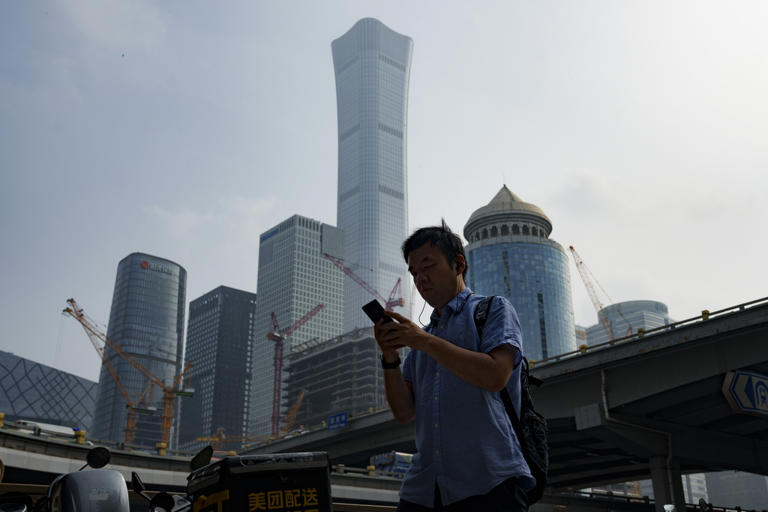China’s economic landscape is facing a complex array of challenges as it contends with slower-than-expected growth in the second quarter of 2024. The economy expanded at an annual rate of 4.7%, a noticeable decline from the 5.3% growth recorded in the first quarter. Despite the slowdown, the National Bureau of Statistics has highlighted areas of improvement in factory output, income, and investment, emphasizing the arduous progress made in the face of both global and domestic economic pressures.
Economic Challenges and Context
Several factors contribute to the current economic slowdown:
- Global Economic Weakness: The momentum of global economic growth has been tepid, affecting China’s export-driven economy. With key international markets experiencing slowdowns, the demand for Chinese goods has been inconsistent.
- Persistent Inflation: Inflation remains a persistent issue, eroding purchasing power and adding to the costs faced by both consumers and businesses. This sticky inflation complicates the economic landscape by dampening consumer confidence and spending.
- Geopolitical Tensions and Trade Frictions: Ongoing geopolitical conflicts and trade disputes have created a climate of uncertainty, impacting international trade flows and investment decisions. These frictions have necessitated a more cautious approach from businesses and policymakers.
- Domestic Demand Issues: Insufficient domestic demand continues to be a significant hurdle. With consumers cautious about spending and businesses wary of expanding, the domestic market has not provided the robust support needed to drive higher growth.
- Operational Pressures on Enterprises: Companies are experiencing substantial operational pressures due to a combination of rising costs, regulatory challenges, and market uncertainties. These pressures are particularly pronounced in sectors that are heavily reliant on exports and those facing intense competition.
- Risks in Key Areas: The economy is also grappling with risks and hidden dangers in critical sectors such as real estate and finance. These vulnerabilities have the potential to exacerbate economic instability if not managed carefully.
Government Response and Economic Policy
In response to these challenges, the government has reported a 5% growth rate for the first half of the year, in line with its annual target. However, this figure masks underlying weaknesses in consumer demand and government spending, which are pivotal for sustaining long-term growth.
This economic update coincides with a significant political event: the third plenary session of the Communist Party’s 205-member Central Committee. This once-a-decade conclave is focused on setting the economic policies that will guide the country in the coming years. Delayed from last year, this year’s meeting is expected to prioritize self-sufficient growth strategies, especially in the context of heightened trade and technology tensions with other major economies.
Key Focus Areas for Policy Makers
- Self-Sufficiency: In an era marked by trade wars and technology blockades, there is an emphasis on reducing dependence on foreign technologies and boosting domestic capabilities.
- Economic Stimulus: Policies aimed at revitalizing consumer demand and encouraging business investment are critical. This includes potential tax cuts, subsidies, and increased government spending on infrastructure projects.
- Property Market Stabilization: Addressing the prolonged downturn in the property market is essential. Measures to stabilize housing prices and support construction activities are likely to be on the agenda.
Positive Developments and Signs of Stabilization
Despite the slower overall growth, there are positive developments that suggest certain sectors are stabilizing:
- Exports: June’s export figures were higher than expected, growing by 8.6% year-over-year. This boost in exports has significantly widened China’s trade surplus to $99 billion, up from $82.6 billion in May. The strong performance in exports underscores the resilience of China’s manufacturing and trade sectors.
- Factory Output: Factory output increased by 5.3% in June, indicating a recovery in industrial production. This growth reflects improved operational efficiencies and increased demand for Chinese goods in international markets.
- Retail Sales: Retail sales, a key indicator of consumer demand, rose by 5.1% from January to May. This gradual increase in retail sales points to a slow but steady recovery in consumer confidence and spending.
- Nominal Disposable Income: Nominal disposable income grew by 5.4%, although this figure is not adjusted for inflation. The increase in disposable income is crucial for sustaining consumer spending, which is a key driver of economic growth.
Expanding consumer demand is seen as essential for supporting sustained strong growth. However, this has proven difficult as companies shed jobs during and after the pandemic, causing many Chinese families to tighten their purse strings. The government’s focus on boosting consumer confidence and spending will be vital in driving future growth.
Conclusion
China’s economic performance in the second quarter of 2024 highlights the challenges and complexities the nation faces. With a slower-than-expected growth rate of 4.7%, the country must navigate a landscape marked by global economic weakness, persistent inflation, and domestic demand issues. However, signs of stabilization in key sectors such as exports, factory output, and retail sales offer a glimmer of hope.
The outcomes of the current Central Committee plenary session will be closely watched for policy measures aimed at addressing these challenges and fostering a more resilient and self-sufficient economic growth trajectory. As China continues to adapt to a rapidly changing global environment, the strategies and policies implemented now will play a crucial role in shaping the country’s economic future.
